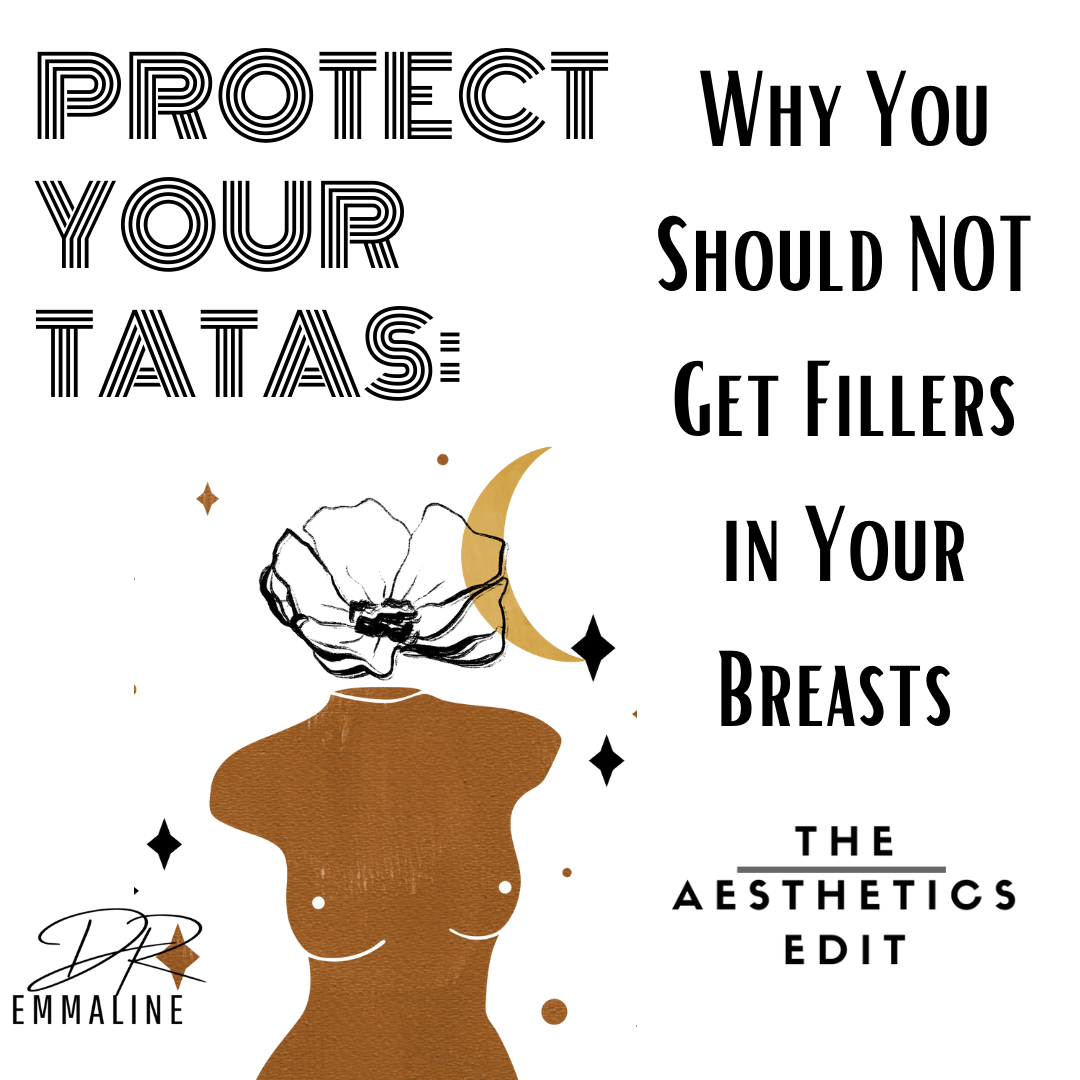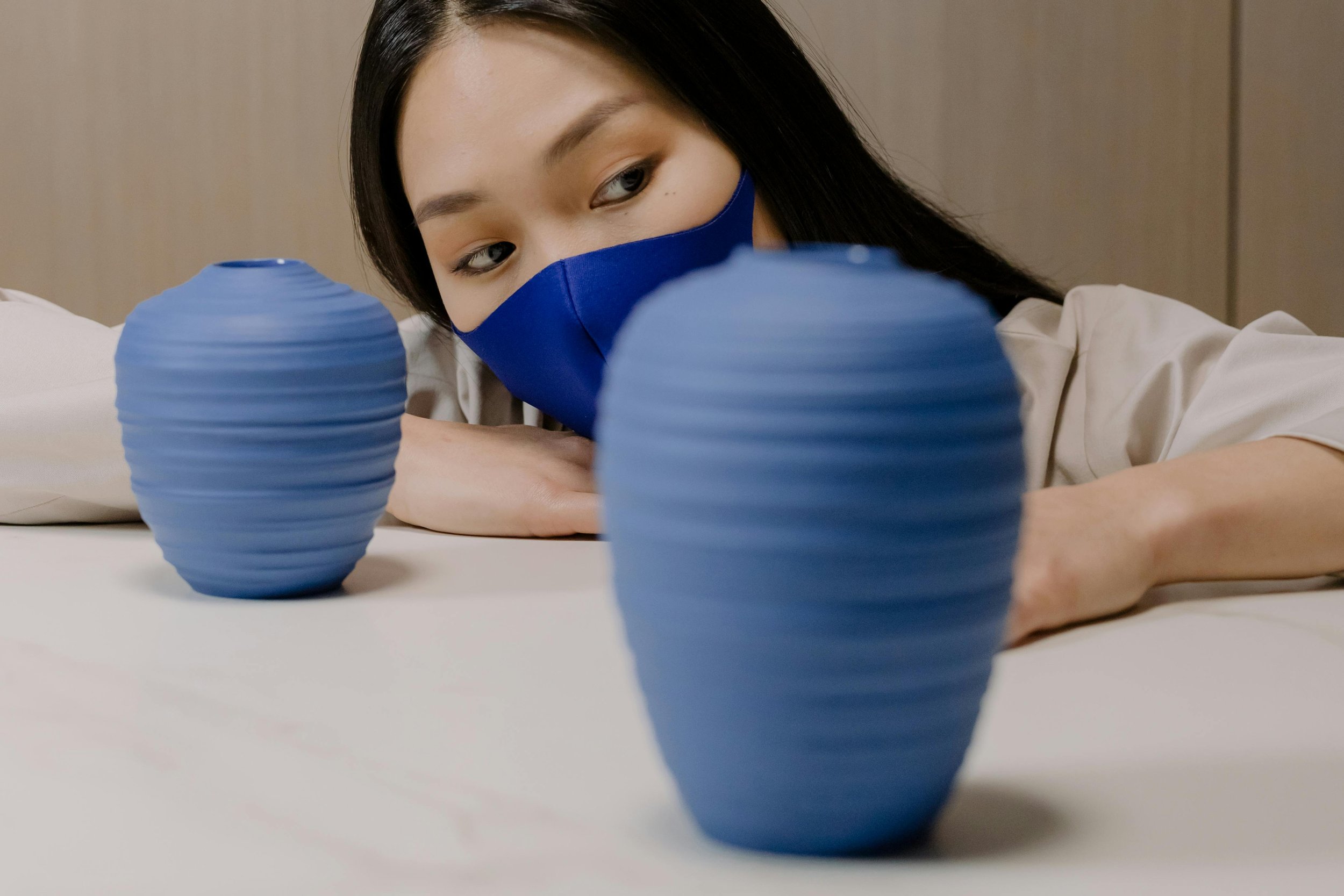Protect Your Tatas: Why You Should NOT Be Getting Filler Injections in Your Breasts
While the idea of a liquid or “lunchtime” boob-job may sound appealing on the surface, getting filler in your breasts is not recommended by most ethical clinicians.
Why?
Well, not only is it a procedure that was rapidly withdrawn from the market over a decade ago, it was never supported with much safety data, there were various complications and risks that went with it, and it makes breast cancer screening almost impossible!
The Withdrawal
Macrolane is a hyalruonic acid filler that was initially developed and approved in Europe in 2008 for use in breast augmentation. It was very quickly withdrawn from the market in three years in 2011 because of multiple reported issues. Of note, this treatment was never granted FDA approval.
In fact, the British Association of Aesthetic Plastic Surgeons (BAAPS) and British Association of Plastic and Reconstructive Plastic Surgery (BAPRAS) were delighted when the treatment was withdrawn. You can read their statements and press releases here and here.
BAAPS reported that one in four of their surgeons was seeing complications due to this treatment, and there was a lack of peer-reviewed clinical trials demonstrating its safety. Most of all, they had warned that this treatment would interfere with cancer screening when it was first announced. BAPRAS stated “if there is any doubt about the safety and efficacy of a product it should not be used.”
The Issues
Complications
There was some concern about complications including pain, swelling, infection, tissue death, encapsulated lumps and nodules, fibrosis. While filler is safe in other areas, the general consensus amongst many clinicians is that it is not suitable for breast augmentation.
Cancer screening
Nodule formation from this treatment means it is difficult to accurately perform a breast exam to check for lumps, which could risk breast cancer being undiagnosed. Even more significant, this treatment interferes with imaging of the breasts and can mimic disease and cancer on scans. This means that breast cancer screening is incredibly difficult in women who get filler in their breasts, leading to a risk of missed or late cancer diagnoses!
For this reason, the Medicines and Healthcare Products Regulatory Agency has said very clearly do not inject filler into the breast tissue.
In the unregulated landscape of the UK aesthetics world, it is a treatment I frequently see non-medics advertise. Please be advised this procedure could have serious implications for your health, and should not be done.
The bottom line is there are safer and better alternatives out there for breast augmentation, and any medical clinician acting in your best interests would avoid placing filler in this area!
References
Jeyaratnam S, Joethy J. Dangers of Filler Breast Augmentation. Plast Reconstr Surg Glob Open. 2021 Nov 29;9(11):e3898. doi: 10.1097/GOX.0000000000003898. PMID: 34849315; PMCID: PMC8615354.
McCleave MJ. Is breast augmentation using hyaluronic acid safe? Aesthetic Plast Surg. 2010 Feb;34(1):65-8; discussion 69-70. doi: 10.1007/s00266-009-9450-9. Epub 2009 Dec 5. PMID: 19967357.
Trignano E, Baccari M, Pili N, Serra PL, Rubino C. Complications after breast augmentation with hyaluronic acid: a case report. Gland Surg. 2020;9(6):2193-2197. doi:10.21037/gs-20-448















Galderma has unveiled Relfydess™ (RelabotulinumtoxinA), the world’s first ready-to-use liquid neuromodulator developed with proprietary PEARL™ Technology. This groundbreaking product has recently received approval for use in Europe. So what is it, and what sets it apart from the other toxins?.